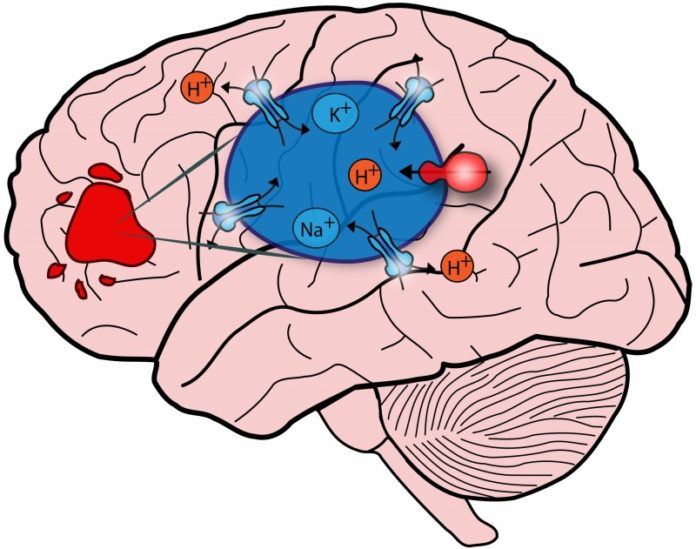
Applying lessons learned from autism to brain cancer, researchers at The Johns Hopkins University have discovered why elevated levels of the protein NHE9 add to the lethality of the most common and aggressive form of brain cancer, glioblastoma. Their discovery suggests that drugs designed to target NHE9 could help to successfully fight the deadly disease.
A summary of their work in human tumor cells and mice was published today in the journal Nature Communications.
“My laboratory’s research on cargo transport inside the cells of patients with autism has led to a new strategy for treating a deadly brain cancer,” says Rajini Rao, Ph.D., a professor of physiology at the Johns Hopkins University School of Medicine. “This is a great example of the unexpected good that can come from going wherever the science takes us.”
All animal and human cells contain many “cargo packages” surrounded by membranes. These so-called endosomes carry newly minted proteins to specific destinations throughout the cell and haul away old proteins for destruction. Key to their “shipping speed” is the level of acidity inside the endosomes. This is controlled by balancing the activity of protein “pumps” that push protons into endosomes to increase their acidity with that of protein “leaks,” like NHE9, that remove protons.
Rao says: “Endosomes are like buckets of water that have to be kept full despite the leaks in them. Altering either the faucet or the leak rate can dramatically change the water level in the bucket.”
Rao’s research group previously showed that autism-associated defects in the protein NHE9 are harmful because they “clog the leaks,” leaving endosomes too acidic and making them race to remove cargo from the cell membrane, destroying proteins prematurely.
To better understand NHE9, graduate students and postdoctoral fellows in Rao’s lab searched through patient databases to see if it had other effects on human health. To their surprise, they found that elevated levels of NHE9 are associated with resistance to radiation, chemotherapy and poorer prognoses for patients with glioblastomas.
Teaming up with Alfredo Quinones-Hinojosa, M.D., a professor of neurosurgery at Johns Hopkins, the researchers examined NHE9 in tumor cells from several patients. Cells with low levels of NHE9 grew the slowest, the team found, and those with the highest levels grew fastest. Similarly, the cells with the most NHE9 traveled fastest when placed on a surface mimicking that of the brain, suggesting a high potential for metastasis. And this was confirmed when the tumor cells, which were manipulated to have high or low NHE9, were transplanted into the brains of mice.
Based on their autism research, the team suspected that the boost NHE9 gave to glioblastomas was explained by abnormal endosome acidity. Further studies revealed that, in contrast to autism, NHE9 is overactive in brain cancer, causing endosomes to leak too many protons and become too alkaline. This slows down the “shipping rate” of cancer-promoting cargo and leaves them on the cell surface for too long.
Research from other laboratories suggested that one such cargo protein is EGFR, which maintains cancer-promoting signals at the cell surface and helps tumors become more robust so they grow and move faster. It is also found at elevated levels in more than one-half of patients with glioblastomas. Drugs targeting EGFR in these patients are sometimes effective.
As they suspected, the team found that alkaline endosomes slow down the removal of EGFR from cell surfaces. Lab-grown tumor cells were more readily killed when treated with both a drug countering NHE proteins and a drug against EGFR than when treated by the EGFR-targeting drug alone.
Quinones-Hinojosa says: “We are still five to 10 years away from testing this idea in patients, but these results are encouraging. They give us a better idea of what to target so that hopefully we can make this disease less aggressive and less devastating.”
Story Source:
The above story is based on materials provided by Johns Hopkins Medicine. Note: Materials may be edited for content and length.
Journal Reference:
- Kalyan C. Kondapalli, Jose P. Llongueras, Vivian Capilla-González, Hari Prasad, Anniesha Hack, Christopher Smith, Hugo Guerrero-Cázares, Alfredo Quiñones-Hinojosa, Rajini Rao. A leak pathway for luminal protons in endosomes drives oncogenic signalling in glioblastoma. Nature Communications, 2015; 6: 6289 DOI: 10.1038/ncomms7289
